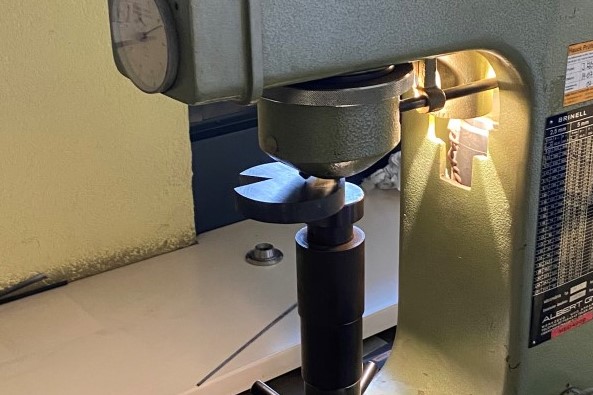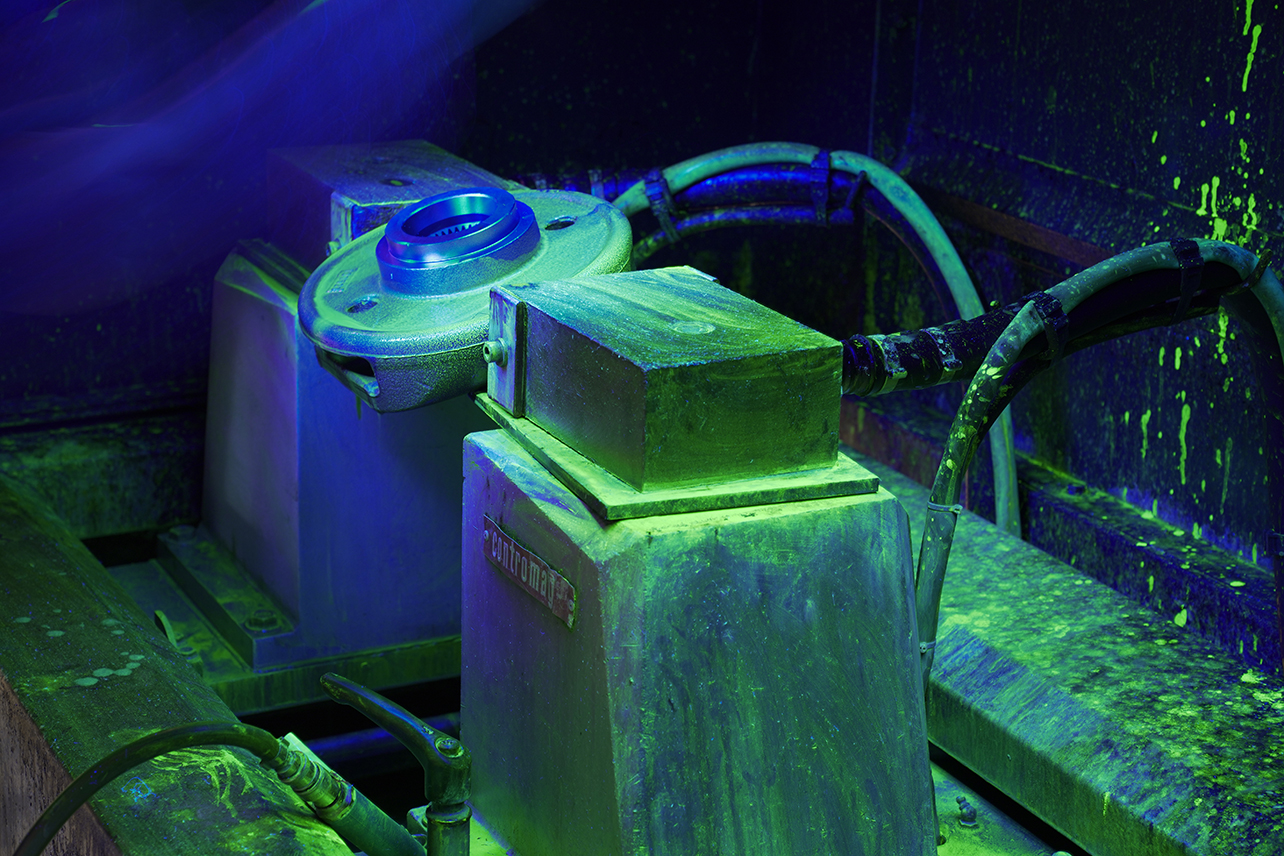Destructive testing
The laboratory analyses and controls samples taken from parts:
-
Micrographic analysis
-
Chemical composition analysis
-
Mechanical property analysis (tensile strength, elongation…)
-
Impact strength analysis
-
Hardness analysis

Non-destructive testing
Non-destructive testing methods meet quality, safety and reliability requirements. The objective of this method cannot be separated from the means used.
The notions of quality and reliability have evolved, rapid progress has been made in quality control systems, and industrial products are of higher quality. All of this has led to a marked development in the methods and equipment used for non-destructive testing.

The device detects defects in the core of the part by transmitting and receiving ultrasonic waves. It measures a material's wall thickness and sound velocity, each material having its own sound velocity.

Magnetic particle inspection detects surface defects in metals (cracks and porosity). The operator is COFREND qualified.

Non-destructive radiographic testing reveals internal defects.
It consists in the analysis of an image that reflects the absorption of a beam that has passed through the part.

The scanner allows to digitize the part in 3D and to note possible defects present on the external aspect.
